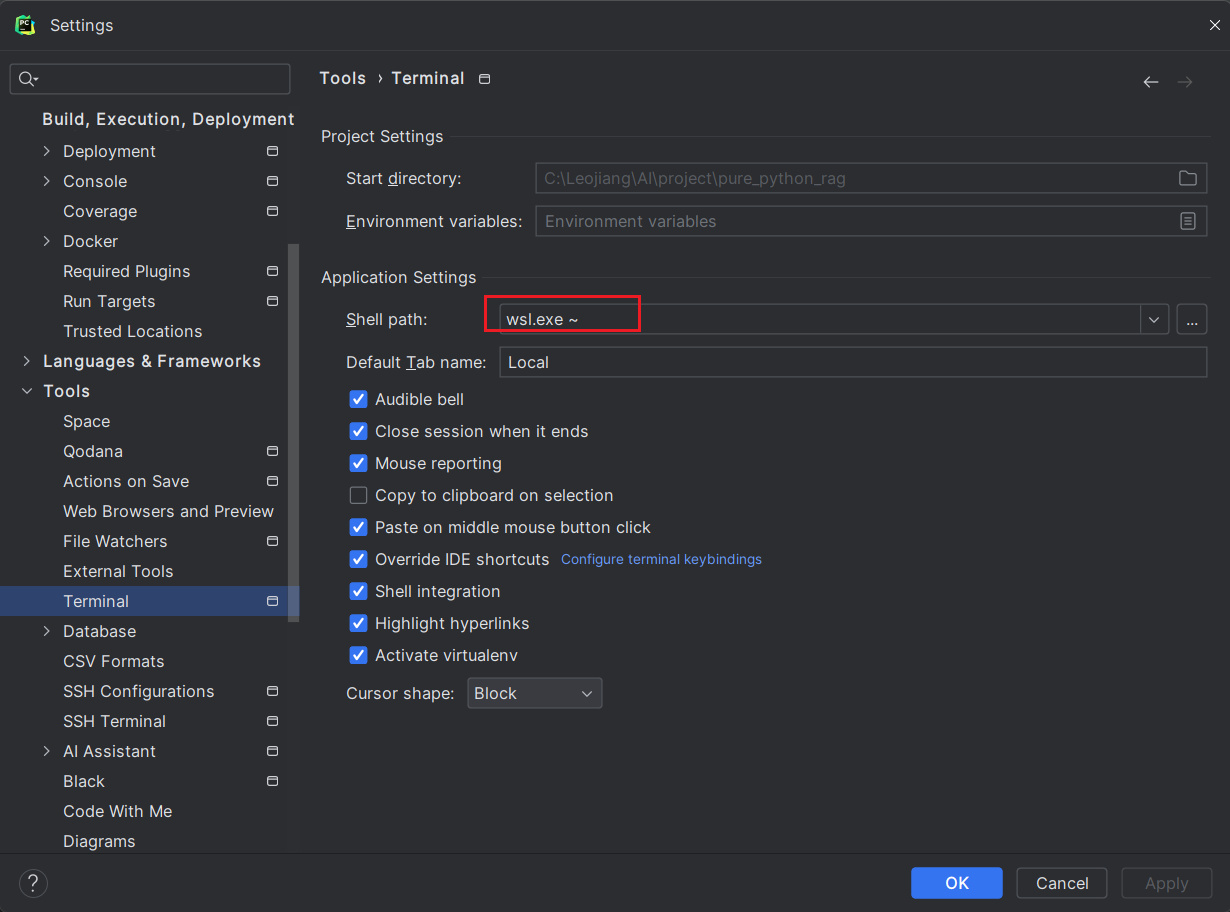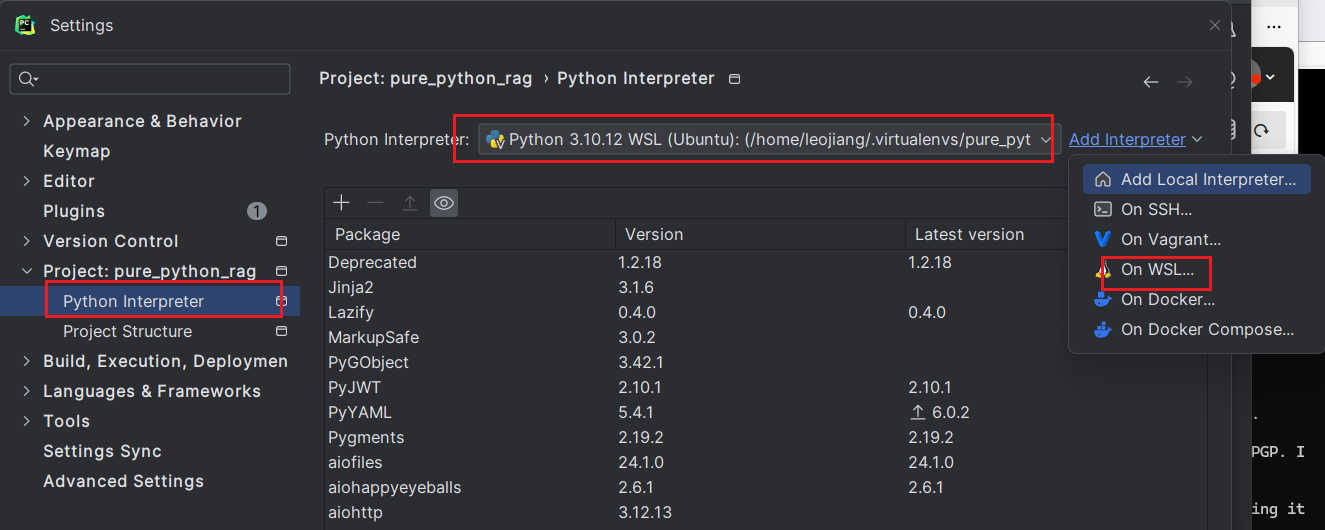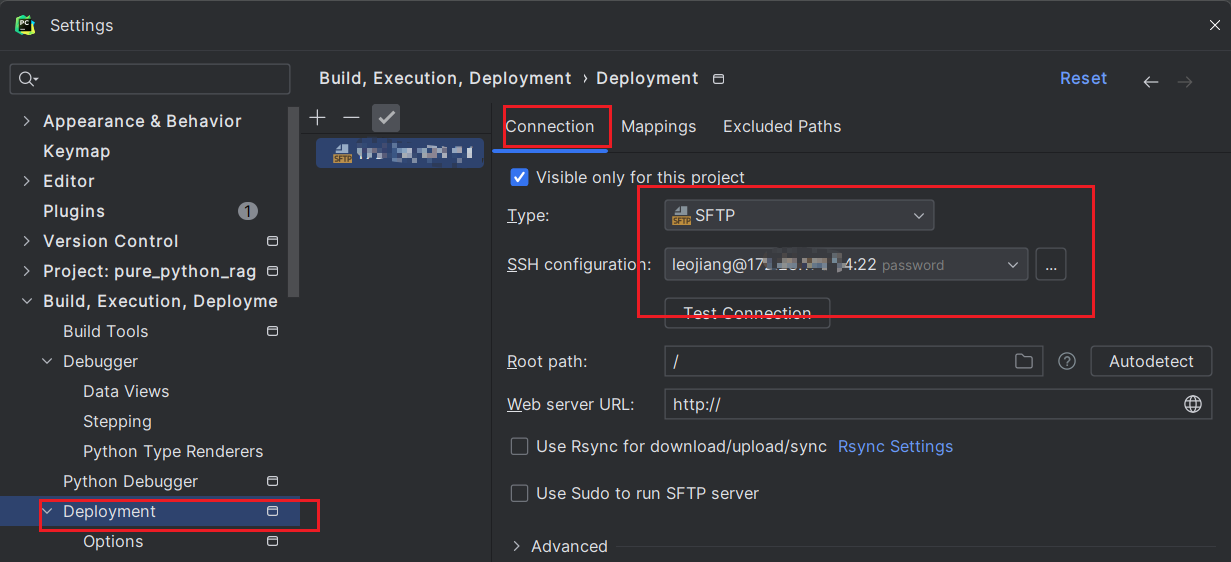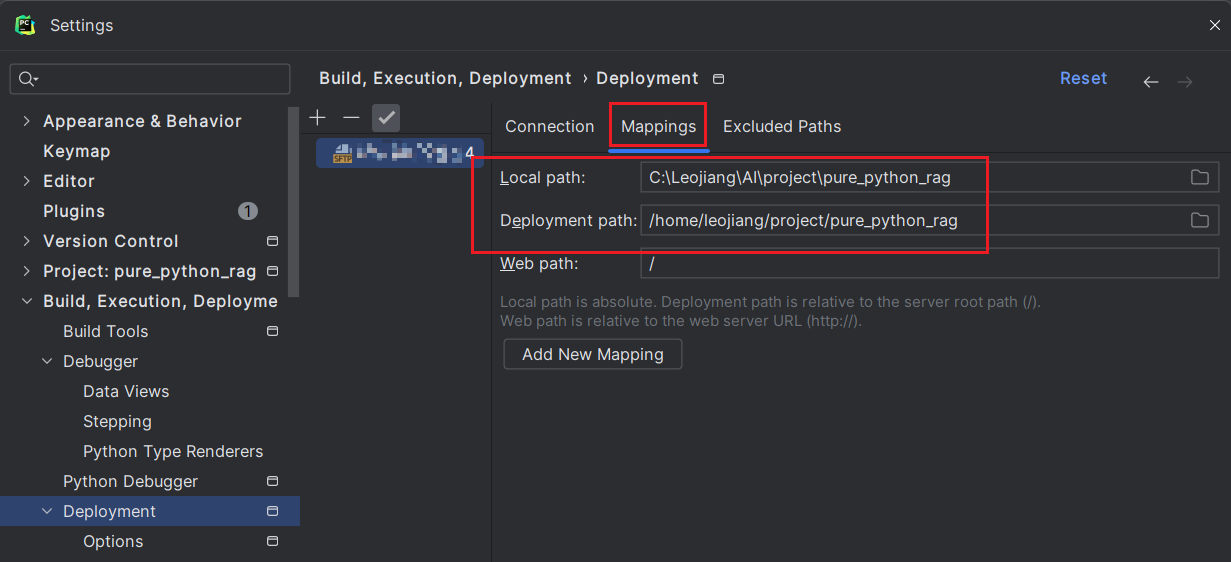Python 编写私有知识问答系统(RAG)
检索增强生成 – RAG(retrieval-augmented generation)
📝 项目说明
- 不依赖 LangChain,纯Python基于 sentence-transformers + FAISS/Qdrant 构建
- DeepSeek-R1 本地推理通过 Flask 提供 HTTP 接口
- 使用简单,支持 CLI 交互
📁 目录结构
pure_python_rag/
├── Chainlit/ # 前端使用Chainlit,并封装faiss为api调用 (chainlit + faiss + LLM)
│ └── rag_chainlit/
│ ├── app.py # 前端使用Chainlit调用封装的API
│ └── faiss_api.py # 用Faiss做检索封装成API
├── data/
│ └── raw_docs/ # 文本资料放这里(txt格式)
│ └── how_to_generate_cert.txt
├── embedding_faiss.py # 选择faiss向量构建脚本
├── embedding_qdrant.py # 选择qdrant向量构建脚本
├── faiss_index/ # FAISS 向量索引自动生成的目录
├── rag_infer_faiss.py # faiss检索+推理脚本 -- 支持 CLI 交互
├── rag_infer_qdrant.py # qdrant检索+推理脚本 -- 支持 CLI 交互
├── requirements.txt # 依赖列表
└── test.py # 测试各个模块的脚本
🚀 使用说明
- 安装依赖(下有具体安装步骤)
pip install -r requirements.txt
准备资料文件(.txt)放入
data/raw_docs/构建索引
python embedding.py
- 启动 cli 问答
python rag_infer.py
🔗 说明
默认使用 all-MiniLM-L6-v2 向量模型,你可替换为其他模型。
DeepSeek-R1 推理服务需提供 /generate 接口,POST JSON 格式如下:
{ "prompt": "..." }
返回格式为:
{ "response": "..." }
一、配置开发环境 (本文选择pycharm开发 )
- (可跳过根据自身情况选择即可)
1、配置pycharm
1.1、Ubuntu允许ssh远程连接
WSL 启动的ubuntu默认是没有ssh的,需要在ubuntu上安装ssh服务
sudo apt install openssh-server
1.2、如何让 PyCharm Terminal 默认打开 WSL Ubuntu?
设置 Terminal 默认使用 WSL
打开 PyCharm 进入菜单:File > Settings > Tools > Terminal
找到 Shell path(终端路径),改成:
wsl.exe ~

then remoter server “leojiang@E-5CG2310DND” can be used.

1.3、通过 WSL 接入解释器(interpreter)
打开 PyCharm: File → Settings → Project: your_project_name → Python Interpreter
- 点击右上角 ⚙ → Add… 右侧选择 WSL
- 👉 它会显示你的 WSL 发行版(如 Ubuntu)
- ✅ 点击右下角的 “Existing environment” (注意:这个操作必须在 WSL 模式下,才会可用)
点击 OK,PyCharm 会自动下载 helper 并构建索引

1.4、同步本地文件到remote server实时测试
配置Deployment path mapping – 同步本地文件到remote server


二、编写RAG增强实现私有知识问答系统
✅ RAG 简化流程如下:
典型的 RAG(Retrieval-Augmented Generation)检索增强生成 工作机制的核心流程:
构建向量库(离线阶段):
- 将本地知识文档(如 PDF、txt、Word 等)进行分段(chunk)处理。
- 每个段落生成一个向量(embedding),例如用
all-MiniLM-L6-v2模型。 - 将这些向量存入 FAISS 等向量数据库中,并保留每段原文(方便后续召回使用)。
用户提问时(在线阶段):
- 把用户问题用相同的 embedding 模型转成向量。
- 在向量库中查找最近的几个段落(通常是 3~5 段),作为相关上下文。
构造 Prompt 提交给大模型(LLM):
把这几个相关段落作为 “资料” 或 “上下文” 放入 prompt 模板中:
text复制编辑你是企业内部知识问答助手,请根据下列资料回答用户问题。 资料: {context} 问题: {question}将 prompt 发给 LLM(如 DeepSeek、GPT-4、Yi 等)生成答案。
LLM 根据提供的资料来“总结回答”,避免幻觉,更具上下文针对性。
1、 安装依赖
方法一、可以直接指定文件安装.
├── requirements.txt
faiss-cpu
sentence-transformers
requests
安装
pip install -r requirements.txt
方法二、也可以手动指定安装。
# requests 是 Python 里最流行的 HTTP 库,作用就是让你方便地发送 HTTP 请求,比如 GET、POST、PUT、DELETE 等,跟网络服务器交互。
pip install requests
# sentence_transformers 是一个基于 Transformers 和 PyTorch 的 Python 库,主要用途是将文本(句子、段落等)转换成 向量(embedding),用于各种自然语言处理(NLP)任务。它的核心优势是生成的向量在语义空间上表现良好,可以用于语义搜索、相似度匹配、聚类等应用。https://sbert.net/docs/installation.html
pip install sentence-transformers
2、构建向量库(离线阶段)
2.1、 安装向量库
1.1、 安装Faiss向量库(本次测试使用)
使用 pip 安装(最简单)适用于大多数用户:
pip install faiss-cpu
如果你用的是 NVIDIA 显卡 + CUDA 环境,并希望使用 GPU 加速:
pip install faiss-gpu
⚠️ 注意:
faiss-gpu需要你的 CUDA 环境配置正确(例如 CUDA 11.8 + NVIDIA 驱动 + PyTorch 已能用 GPU)。
1.2、 安装 Qdrant向量库(待选)
version: '3.9'
services:
qdrant:
image: qdrant/qdrant
container_name: qdrant
ports:
- "6333:6333"
- "6334:6334"
volumes:
- ./qdrant_data:/qdrant/storage
6333: REST API 端口6334: gRPC 端口/qdrant/storage: 存储路径(可持久化)运行:
docker-compose up -d
| 特性 | FAISS | Qdrant |
|---|---|---|
| 部署方式 | 本地库,嵌入 Python | 本地或容器部署,REST/gRPC API |
| 查询方式 | Python 内部调用 | REST API / SDK(Python、JS、Rust 等) |
| 是否持久化 | ❌ 默认不持久化(需手动保存 .index) |
✅ 自动持久化(支持文件或嵌入式 DB) |
| 支持元数据过滤 | ❌ 不支持(需自己维护映射) | ✅ 原生支持(filter 查询非常灵活) |
| 向量更新能力 | ⚠️ 无删除,需重建或全量替换 | ✅ 原生支持增删改 |
| 数据量支持 | ✅ 中小规模(适合 <1 亿条) | ✅ 大小皆宜(内存或 RocksDB) |
| 查询速度 | ⚡ 快(内存中) | ⚡⚡ 快(可持久化,结构优化) |
| 多语言客户端 | ❌ 仅 Python | ✅ Python、Go、Rust、Node.js 等 |
| 社区 & 文档 | ⭐⭐ 中等 | ⭐⭐⭐⭐ 丰富,API 文档全面 |
| 企业部署推荐等级 | ⚠️ 原型开发更适合 | ✅ 推荐用于生产级 RAG |
2.2、选择faiss向量构建脚本
① 将本地知识文档(如 PDF、txt、Word 等)进行分段(chunk)处理。
② 每个段落生成一个向量(embedding),例如用
all-MiniLM-L6-v2模型。③ 将这些向量存入 FAISS 等向量数据库中,并保留每段原文(方便后续召回使用)。
├── embedding_faiss.py
from sentence_transformers import SentenceTransformer
import faiss
import os
import numpy as np
import json
DATA_PATH = "./data/raw_docs/"
INDEX_PATH = "/home/leojiang/project/pure_python_rag/faiss_index"
EMBEDDING_MODEL = "/home/leojiang/project/pure_python_rag/all-MiniLM-L6-v2"
model = SentenceTransformer(EMBEDDING_MODEL)
def load_docs():
texts = []
for fname in os.listdir(DATA_PATH):
with open(os.path.join(DATA_PATH, fname), 'r', encoding='utf-8') as f:
print("file name: ", fname)
raw = f.read()
chunks = [raw[i:i+500] for i in range(0, len(raw), 400)]
texts.extend(chunks)
return texts
def build_index(texts):
embeddings = model.encode(texts, normalize_embeddings=True)
index = faiss.IndexFlatIP(embeddings.shape[1])
index.add(np.array(embeddings))
os.makedirs(INDEX_PATH, exist_ok=True)
faiss.write_index(index, os.path.join(INDEX_PATH, "docs.index"))
with open(os.path.join(INDEX_PATH, "docs.json"), "w", encoding="utf-8") as f:
json.dump(texts, f, ensure_ascii=False)
if __name__ == "__main__":
docs = load_docs()
build_index(docs)
print("✅ FAISS 索引构建完成")
运行后会在 ├── faiss_index/ 看到我们生成的索引。raw_docs目录中的文件将会向量化,供之后查询引用。
注:如果运行
embedding_faiss.py后embedding的模型无法自动下载,可以手动下载(下载完后对比下大小,要和hugginface上的一致要不无法使用)sudo apt install git-lfs git lfs install git clone https://huggingface.co/sentence-transformers/all-MiniLM-L6-v2 cd all-MiniLM-L6-v2 git lfs pull
推荐入门向量模型 下载地址 HuggingFace
| 场景 | 模型名称 | 备注 |
|---|---|---|
| 中文单语句向量 | shibing624/text2vec-base-chinese |
中文专用,效果不错 |
| 英文快速入门 | all-MiniLM-L6-v2 |
轻量快,广泛用 |
| 英文高质量 | all-mpnet-base-v2 |
精度高,速度适中 |
| 多语言支持 | paraphrase-multilingual-MiniLM-L12-v2 |
支持多语言,通用性强 |
| 百度中文BGE | BAAI/bge-base-zh-v1.5 |
需确认是否完全兼容,可能需自定义加载 |
3、优先从向量库中回答问题:
用户提问时(在线阶段):
- 把用户问题用相同的 embedding 模型转成向量。
- 在向量库中查找最近的几个段落(通常是 3~5 段),作为相关上下文。
构造 Prompt 提交给大模型(LLM):
把这几个相关段落作为 “资料” 或 “上下文” 放入 prompt 模板中:
text复制编辑你是企业内部知识问答助手,请根据下列资料回答用户问题。 资料: {context} 问题: {question}将 prompt 发给 LLM(如 DeepSeek、GPT-4、Yi 等)生成答案。
LLM 根据提供的资料来“总结回答”,避免幻觉,更具上下文针对性。
├── rag_infer_faiss.py # faiss检索+推理脚本 – 支持 CLI 交互
import threading
import faiss
import numpy as np
import json
from sentence_transformers import SentenceTransformer
import requests
import os
import time
INDEX_PATH = "/home/leojiang/project/pure_python_rag/faiss_index"
EMBEDDING_MODEL = "/home/leojiang/project/pure_python_rag/all-MiniLM-L6-v2"
DEEPSEEK_API = "http://localhost:11434/api/generate"
model = SentenceTransformer(EMBEDDING_MODEL)
index = faiss.read_index(os.path.join(INDEX_PATH, "docs.index"))
texts = json.load(open(os.path.join(INDEX_PATH, "docs.json"), encoding="utf-8"))
thinking = True # 控制 loading 动画
received_any_response = False # 控制是否接收到模型的第一个 token
def loading_animation():
spinner = ["|", "/", "-", "\\"]
idx = 0
while thinking:
print(f"\r🤖 正在思考 {spinner[idx % len(spinner)]}", end="", flush=True)
idx += 1
time.sleep(0.1)
def query(question):
# 启动 loading 动画线程
global thinking, received_any_response
thinking = True # 控制 loading 动画
received_any_response = False # 控制是否接收到模型的第一个 token
t = threading.Thread(target=loading_animation)
t.start()
q_emb = model.encode([question], normalize_embeddings=True)
scores, indices = index.search(np.array(q_emb), k=5)
context = "\n".join([texts[i] for i in indices[0]])
prompt = f"""
你是企业内部知识问答助手,请根据下列资料回答用户问题。
资料:
{context}
问题:{question}
"""
resp = requests.post(DEEPSEEK_API, json={"prompt": prompt
,"model": "deepseek-r1:7b"
# ,"model": "llama3"
,"stream": True},stream=True)
# return resp.json().get("response", "⚠️ 无法获取回答") # 这样是一次性读取完整的响应需要配置stream=False
print("✅ LLM 流式响应开始:")
full_response = ""
print("🤖 回答开始:", end="", flush=True)
for line in resp.iter_lines():
if line:
line_str = line.decode('utf-8')
try:
data = json.loads(line_str)
chunk = data.get("response", "")
done = data.get("done", False)
# 过滤无意义内容
if chunk.strip() and chunk not in ["<think>", "</think>"]:
# 检测到返回内容后关闭动画
if not received_any_response:
thinking = False
t.join()
received_any_response = True
print(chunk, end="", flush=True) # 实时打印
full_response += chunk
if done:
print("\n🤖 回答结束")
break
except json.JSONDecodeError:
thinking = False
t.join()
# 忽略无法解析的行
pass
return full_response
print("✅ LLM 流式响应结束:")
if __name__ == "__main__":
while True:
q = input("🧠 请输入问题:")
query(q)
运行rag_infer_faiss.py ,就可以进行cli实时交互啦。
三、还可封装私有 API 供web调用
├── Chainlit/ # 前端使用Chainlit,并封装faiss为api调用 (chainlit + faiss + LLM)
│ └── rag_chainlit/
│ ├── app.py # 前端使用Chainlit调用封装的API
│ └── faiss_api.py # 用Faiss做检索封装成API
1、选用( FastAPI )进行封装
pip install fastapi uvicorn
# or
pip install "fastapi[standard]" # 推荐
| 安装命令 | 安装内容 | 适用场景 |
|---|---|---|
pip install fastapi uvicorn |
最小依赖 | 快速起项目/最小化依赖需求 |
pip install "fastapi[standard]" |
推荐依赖全安装 | 表单上传、HTML 渲染、验证等完整功能 |
├── faiss_api.py
from fastapi import FastAPI, Request
from fastapi.responses import StreamingResponse
import faiss
import numpy as np
import json
from sentence_transformers import SentenceTransformer
import requests
import os
from fastapi.middleware.cors import CORSMiddleware
app = FastAPI()
app.add_middleware(
CORSMiddleware,
allow_origins=["*"],
allow_credentials=True,
allow_methods=["*"],
allow_headers=["*"],
)
# 初始化模型和索引
INDEX_PATH = "/home/leojiang/project/pure_python_rag/faiss_index"
EMBEDDING_MODEL = "/home/leojiang/project/pure_python_rag/all-MiniLM-L6-v2"
DEEPSEEK_API = "http://localhost:11434/api/generate"
model = SentenceTransformer(EMBEDDING_MODEL)
index = faiss.read_index(os.path.join(INDEX_PATH, "docs.index"))
texts = json.load(open(os.path.join(INDEX_PATH, "docs.json"), encoding="utf-8"))
def build_prompt(context, question):
return f"""
你是企业内部知识问答助手,请根据下列资料回答用户问题。
资料:
{context}
问题:{question}
"""
@app.post("/chat")
async def chat(request: Request):
body = await request.json()
question = body.get("question", "")
# 检索相关文档
q_emb = model.encode([question], normalize_embeddings=True)
scores, indices = index.search(np.array(q_emb), k=5)
context = "\n".join([texts[i] for i in indices[0]])
prompt = build_prompt(context, question)
# 请求 LLM 流式响应
def stream_response():
resp = requests.post(DEEPSEEK_API, json={
"prompt": prompt,
"model": "deepseek-r1:7b",
"stream": True
}, stream=True)
for line in resp.iter_lines():
if line:
try:
data = json.loads(line.decode('utf-8'))
chunk = data.get("response", "")
done = data.get("done", False)
if chunk.strip() and chunk not in ["<think>", "</think>"]:
yield chunk
if done:
break
except json.JSONDecodeError:
continue
return StreamingResponse(stream_response(), media_type="text/plain")
- 其实就是把我们
rag_infer_faiss.py中的内容封装成API 供web调用
1.1、启动FastAPI
# 快速启动 (需要 FastAPI ≥ 0.110.0,引入了 fastapi dev 命令。✅ 内置开发服务器启动器(封装了 uvicorn))
fastapi dev faiss_api.py
## or
fastapi dev faiss_api.py --port 8001 --host 0.0.0.0
# or
uvicorn faiss_api:app --host 0.0.0.0 --port 8001 --reload

1.2、测试
curl -X POST http://0.0.0.0:8001/chat -d '{"question":"你好"}' -H "Content-Type: application/json"
2、选择 Chainlit 作为 Web 应用
2.1、安装
pip install chainlit
chainlit hello # If this opens the `hello app` in your browser, you're all set!
├── app.py
import chainlit as cl
import httpx
import os
API_URL = "http://0.0.0.0:8001/chat"
# 清除系统代理变量,避免 httpx 自动走公司网络代理
os.environ.pop("http_proxy", None)
os.environ.pop("https_proxy", None)
os.environ.pop("HTTP_PROXY", None)
os.environ.pop("HTTPS_PROXY", None)
@cl.on_chat_start
async def start():
cl.user_session.set("history", [])
@cl.on_message
async def on_message(message: cl.Message):
question = message.content
try:
async with httpx.AsyncClient(timeout=None) as client:
async with client.stream("POST", API_URL, json={"question": question}) as response:
if response.status_code != 200:
await cl.Message(content=f"❌ 请求失败,状态码: {response.status_code}").send()
return
# 先发送一个空消息,后续逐步更新内容
chat_msg = cl.Message(content="")
await chat_msg.send()
# 流式输出的关键在于 使用 httpx.AsyncClient.stream() 配合 response.aiter_text() 逐块读取服务器返回内容,而不是一次性拿到整个响应。
async for chunk in response.aiter_text():
if chunk.strip():
chat_msg.content += chunk
await chat_msg.update()
# 追加标记,提示回答完成
chat_msg.content += "\n✅ 回答完成"
await chat_msg.update()
except Exception as e:
await cl.Message(content=f"❌ 异常: {str(e)}").send()
① 解决日志返回 403 Forbidden
httpx 默认会读取 http_proxy 环境变量 请求被偷偷转发到 公司代理(如 squid) 然后 squid 判断这个内部地址 不在允许的目标列表中 → 返回 403 Forbidden解决方法 —— chainlit 所需运行的
app.py中加如下条件绕过限制# 清除系统代理变量,避免 httpx 自动走公司网络代理 os.environ.pop("http_proxy", None) os.environ.pop("https_proxy", None) os.environ.pop("HTTP_PROXY", None) os.environ.pop("HTTPS_PROXY", None)
2.2、启动
chainlit run app.py
# or (推荐)
chainlit run app.py --host 0.0.0.0 --port 8501 -w
- -w 标志告诉Chainlit启用自动重新加载,这样您就不需要每次更改应用程序时都重新启动服务器

(完,以上是简单的实战流程,愿对大家有所帮助。)
测试模块的脚本供大家参考
└── test.py
import numpy as np
import requests
import faiss
import json
from sentence_transformers import SentenceTransformer
def main():
url = "http://localhost:11434/api/generate"
payload = {
"model": "deepseek-r1:7b",
"prompt": "DeepSeek 是什么?",
"stream": True
}
try:
response = requests.post(url, json=payload,stream=True)
response.raise_for_status() # 检查请求是否成功
# result = response.json() # 这样是一次性读取完整的响应需要配置stream=False
# print("✅ LLM 响应:", result.get("response", "无返回内容"))
print("✅ LLM 流式响应开始:")
full_response = ""
print("🤖 正在回答...", end="", flush=True)
for line in response.iter_lines(decode_unicode=True):
if line:
line_str = line.decode('utf-8')
try:
data = json.loads(line_str)
chunk = data.get("response", "")
done = data.get("done", False)
# 过滤无意义内容
if chunk.strip() and chunk not in ["<think>", "</think>"]:
print(chunk, end="", flush=True) # 实时打印
full_response += chunk
if done:
print("\n🤖 回答结束")
break
except json.JSONDecodeError:
# 忽略无法解析的行
pass
return full_response
except requests.exceptions.RequestException as e:
print("❌ 请求失败:", e)
except ValueError:
print("❌ 无法解析 JSON 响应")
def test_faiss():
print("FAISS version:", faiss.__version__)
def test_net():
try:
r = requests.get("https://huggingface.co")
print("✅ 能联网,状态码:", r.status_code)
except Exception as e:
print("❌ 无法联网:", e)
print("run command: git lfs install && git clone https://huggingface.co/sentence-transformers/all-MiniLM-L6-v2")
def test_model():
model = SentenceTransformer("/home/leojiang/project/pure_python_rag/all-MiniLM-L6-v2")
sentences = [
"That is a happy person",
"That is a happy dog",
"That is a very happy person",
"Today is a sunny day"
]
# 生成嵌入向量
embeddings = model.encode(sentences)
# 计算相似度矩阵(返回PyTorch张量)
similarities = model.similarity(embeddings, embeddings)
print("相似度矩阵形状:", similarities.shape)
# 关键改进1:打印具体数值(保留4位小数)
print("\n具体相似度矩阵:")
print(np.round(similarities.cpu().numpy(), 4)) # 转换为numpy并打印
# [
# [1. 0.821 0.9476 0.2107], # 句子0 vs 所有句子
# [0.821 1. 0.7619 0.1836], # 句子1 vs 所有句子
# [0.9476 0.7619 1. 0.2337], # 句子2 vs 所有句子
# [0.2107 0.1836 0.2337 1.] # 句子3 vs 所有句子
# ]
if __name__ == "__main__":
# main() # 流式响应测试所用的 LLM
# test_faiss() # 测试faiss是否安装成功
# test_net() # 测试当前环境能否自动获取所需的向量模型
test_model() # 测试向量模型
更多应用推荐请参考: LLM应用层推荐